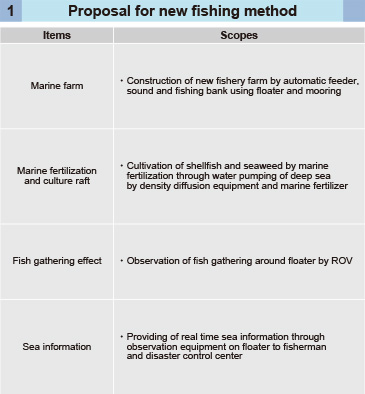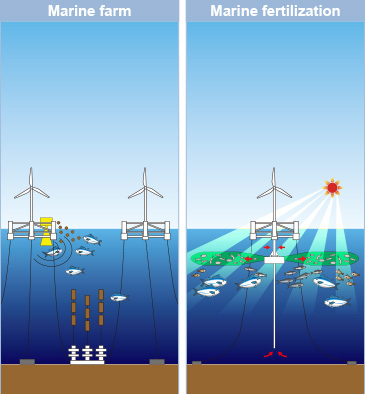Reserch
![]()
A metocean measurement system is developed by considering the floater motion compensation. Wind speed profile and wind direction are measured by anemometers on a met mast and a lider on the floater and are compared each othes. The motion of the floater is measured by using gyro, compass, accelerometer and GPS, and used for the motion compensation.
Also, in this project a dynamic analysis model of FOWT is developed. The model is improved by comparing the model results with water tank test and measurement data at the site.
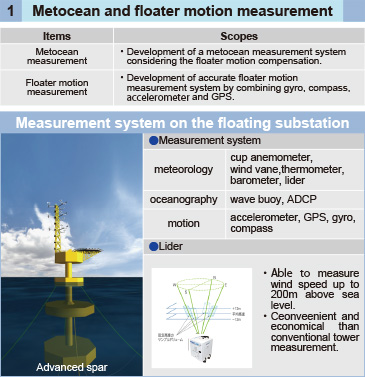
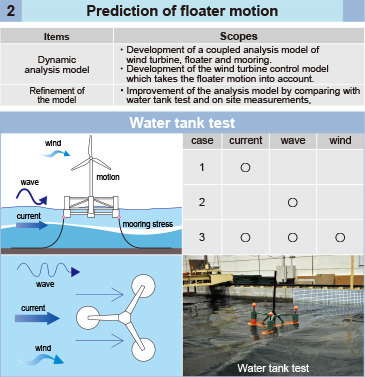
![]()
In the first phase of this project, minimization of floater motion, safety and power generation efficiency are attempted by using a compact semi-submersible floater with 2MW downwind wind turbine.
In the second phase, optimization and verification of the design is attempted by using V-Shape semi-submersible floater with the world largest 7MW wind turbine. These studies will establish technologies for a future large scale offshore floating wind farm.
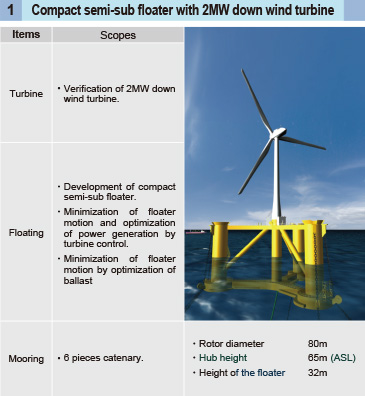
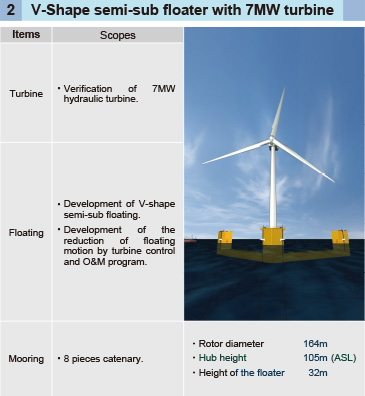
![]()
An offshore floating transformer system which is both durable and unsusceptible to motion is developed by evaluating its performance against vibration and inclination through the shaking table tests.
Furthermore, a large capacity water proof riser cable superior to fatigue is developed and optimized by motion analysis. The goal of these studies is to establish the world first floating offshore transformer system against severe metocean conditions.
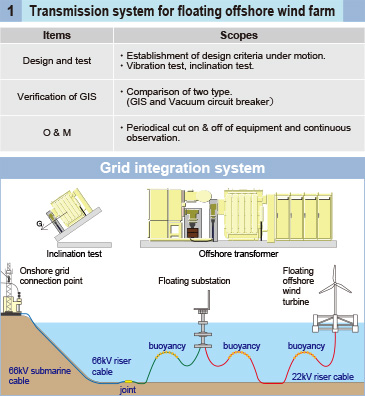
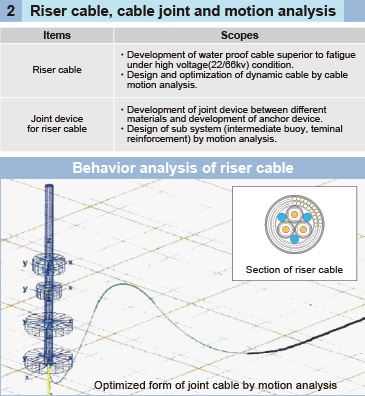
![]()
Optimal construction method which can be conducted under severe weather and minimize the impact on fishery environment is developed based on preliminary survey and estimation of meteocean condition.
Furthermore, optimal construction method for windfarm which consists of multiple floating wind turbines will be established.
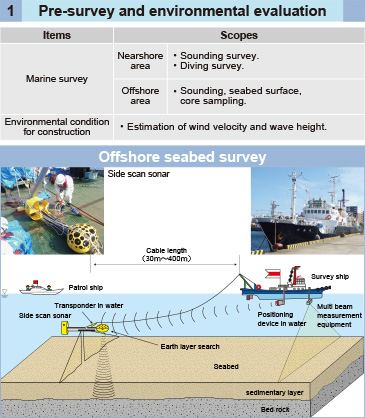
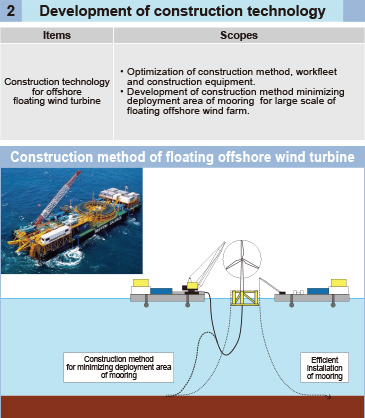
![]()
The TMCP and UIT developed in Japan are applied into steel material for the world first FOWT and the welding efficiency, corrosion resistance and fatigue for the long operation under the severe metocean condition are verified.
These studies will achieve shortening of the construction time and reduction of the construction cost.
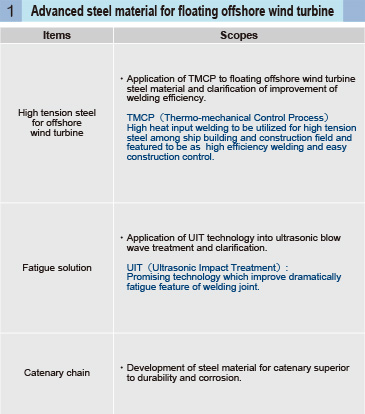
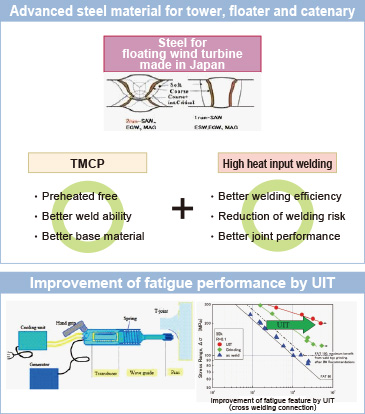
![]()
For floating offshore wind turbines, collisions between ships or collisions between ships and turbines might occur. Development of a collision risk model is carried out and the quantitative collision risk is assessed. Actual traffic data in the coast area along Fukushima are collected. The collision risk assessment makes it possible to take appropriate safety measures.
If mooring is failed by severe storms or accidents, drifting floaters may collide with other wind turbines and ships. A simulation method based on actual response of floating turbines is developed and the consequences of drifting of floating turbines is confirmed.
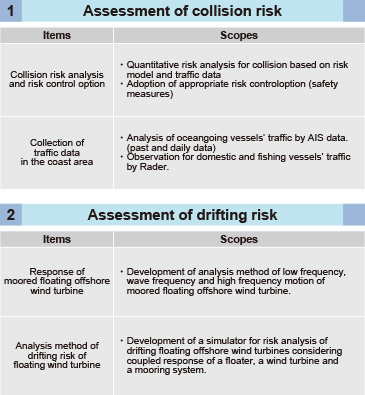
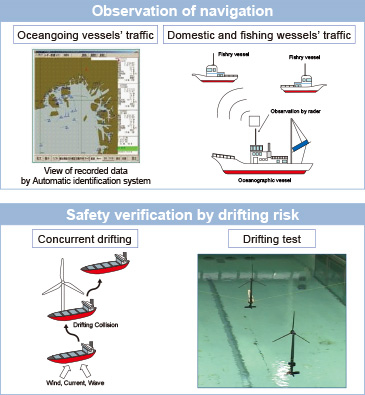
![]()
The environmental impact assessment is implemented around the sea where FOWT and seabed cable are installed.
The habits for seabirds, marine mammal and fish in addition to noise, scenery and radio disturbance will be surveyed and the environmental impact from the installation of the turbine and seabed cable will be clarified.
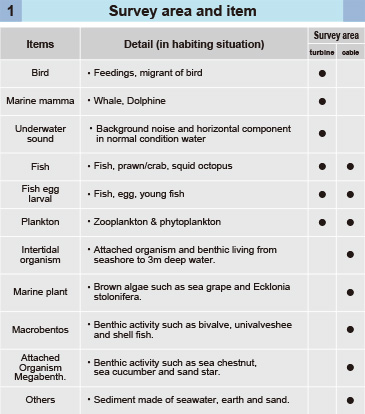
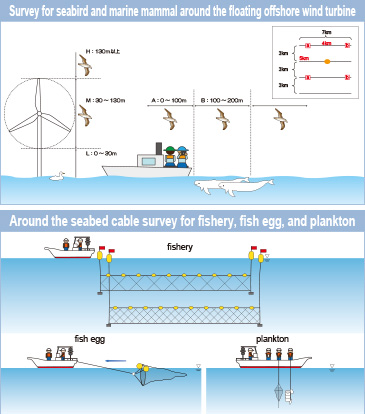
![]()
A committee formed by the government, Fukushima prefecture, local public entity and fishermen’s union is organized. The impact on the sea and fishery operation around the project after installation of FOWT and a new fishing method are investigated working together with the special consultant of fishery industry.
After that, a proposal for fish gathering effect by marine farm, marine fertilization and culture raft and providing sea information will be discussed.
